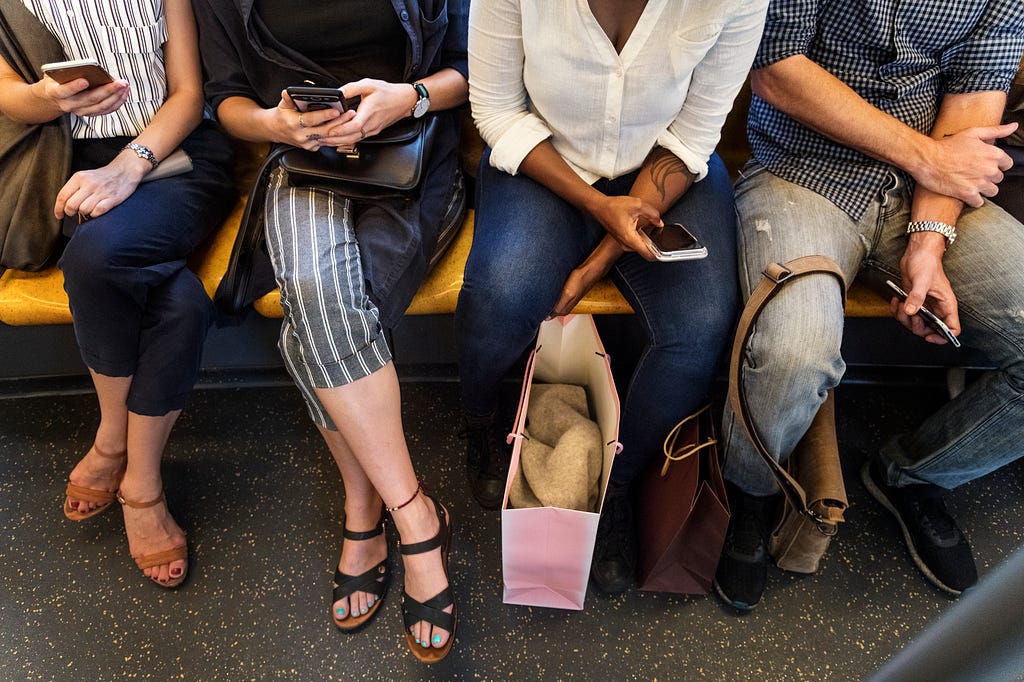A new social infrastructure for an algorithmic world
A new social infrastructure for an algorithmic world
Pt 1 of 3 | Pt 2: Data Legibility | Pt 3: New Public Amenities (coming soon)

The Internet is making new demands on society, and more and more we’re expected to cope with this as individuals, not as communities. Whether it’s digital skills, media literacy, learning to code or safety awareness, the effort of coping is pushed back to us to so we can make it better for ourselves. But rather than letting technology (and a few technologists) take the lead, what capability does society need to shape the influence technology has on our lives?
Doteveryone’s People, Power and Technology research has already shown the public feel a sense of powerlessness in relation to technology. And we experience that powerlessness in at least two different ways: there is too much data for us to comprehend, and it is too personalised.
Whether we are aware of it or not, most of us move through and create too much data every day to have any meaningful understanding of its effects on us. And the continued personalisation and unbundling of services that all this data allows is making us ever-more individualised — which in turn is changing our relationships to our physical communities and traditional support systems.
There is a role for radical new social infrastructure to support and strengthen society, and government, business and civil society should recognise this and work together to invest in and support the creation of:
- Data Legibility: Making technology and its effects more visible.
- A Common Language: Shared ways of talking about and showing data so more people can talk about, and understand the impact it has on our lives.
- New Public Amenities: Creating and strengthening real-world public amenities to help us all navigate this algorithmically driven, “screen-first” world.
This essay in three parts sets out some of the conditions of our escalating disempowerment and describes what a right to better data legibility and investment in and creation of new public amenities could look like.
Introduction
It has been tempting to think, over the last twenty years, that Internet-connected technologies don’t need real-world support structures or counterparts — that everything that happens digitally is entirely screen-sufficient. But now the Internet is reaching maturity, the social gaps and opportunities that data and connectivity have created are becoming more apparent.
The combination of smartphone culture and the 2008 financial crash has changed British society considerably. Our high streets look different: libraries, Post Offices, and pubs are closing or have closed; community noticeboards have turned into vibrant, useful communities on privately owned platforms like NextDoor, Facebook and WhatsApp; and corner shops have become local outposts for big online retailers.
Smartphones and algorithmic culture have democratised convenience and connection, and also brought with them a heightened individualism
Our diverse online lives have changed how we live in streets and suburbs that were built when only the very, very wealthy had their groceries delivered. But the wider social infrastructure— the people and organisations that support the ways we make sense of the world — has not kept pace.
One of the standout findings from Doteveryone’s research into public attitudes to technology is that 50% of people think the Internet is very good for people like them, but only 12% of people think it is very good for society — and this was echoed in this year’s Pew research in the US. Smartphones and algorithmic culture have democratised convenience and connection, and also brought with them a heightened individualism that echoes of Californian car culture: our relationship with our smartphones is increasingly individualistic and is insulating us from the world around us. Or, as one respondent in our research put it, “If you painted a picture of the street everyone would be looking down at a phone — I find it weird and sad.”

The application of new technology is often labelled as “innovation” or “progress”, but letting a technology scale quickly without any way to mitigate its human consequences is quite the reverse. It is shortsighted and lazy. Although few endpoints can be confidently predicted, it is often clear that change will happen, so why isn’t that change better supported?
the freedoms and opportunities of data and connection are still unfolding
For instance, it’s obvious that cultivating personal reliance on cars would change the way people move around California; congestion is as likely an outcome as free movement. Likewise, the freedoms and opportunities of data and connection are still unfolding; some are good, others less so, and they need to be observed, planned for and stewarded.
Alongside regulatory and legislative reform, there is a need for new social infrastructure that supports our access to data and connectivity. Civic planning, education and foresight all have a role to play in this — but there is also a need for more elemental sense-making, for design cues, language and intuition that help to help us describe and sense the systems we encounter and move through.
As we look into the uncertainty of increased automation, more of humanity deserves the tools to shape technology and its effects, rather than simply being expected to catch-up and respond. To do this, we need data and connectivity to be legible and imaginable, so that non-technologists — including civil society — can bring their expertise to shape technology and its effects more actively and not simply respond after the fact to the ways it is changing human experience.
Next > Part 2: Making Data Legible
New social infrastructure for an algorithmic world: Coping not Coding, Part 1 was originally published in Doteveryone on Medium, where people are continuing the conversation by highlighting and responding to this story.